Understanding the Importance of Even Sealant Application for Wood Floors
Even sealant application is crucial for wood floors as it helps to protect the wood from moisture, dirt, and wear and tear. It also enhances the wood’s natural beauty and brings out its unique grain patterns. Uneven sealant application can lead to a patchy and uneven appearance, making the floor difficult to clean and causing the sealant to wear away more quickly in certain areas.
To ensure even sealant application, it is important to use the correct tools and techniques. A paint roller or brush should be used to apply the sealant, and it should be applied in thin, even coats. It is important to allow the sealant to dry completely before applying a second coat. Additionally, following the manufacturer’s instructions and any specific safety considerations is crucial.
In addition to even sealant application, it is important to use materials that are appropriately certified for use as insulation under timber floors to achieve the required thermal transmittance (U-value). Checking the manufacturer’s technical information for certification and details is essential.
By achieving even sealant application and using certified materials, you can protect your wood floor, enhance its beauty, and ensure its longevity.
Identifying Your Wood Floor Type: The First Step to Even Sealant Application
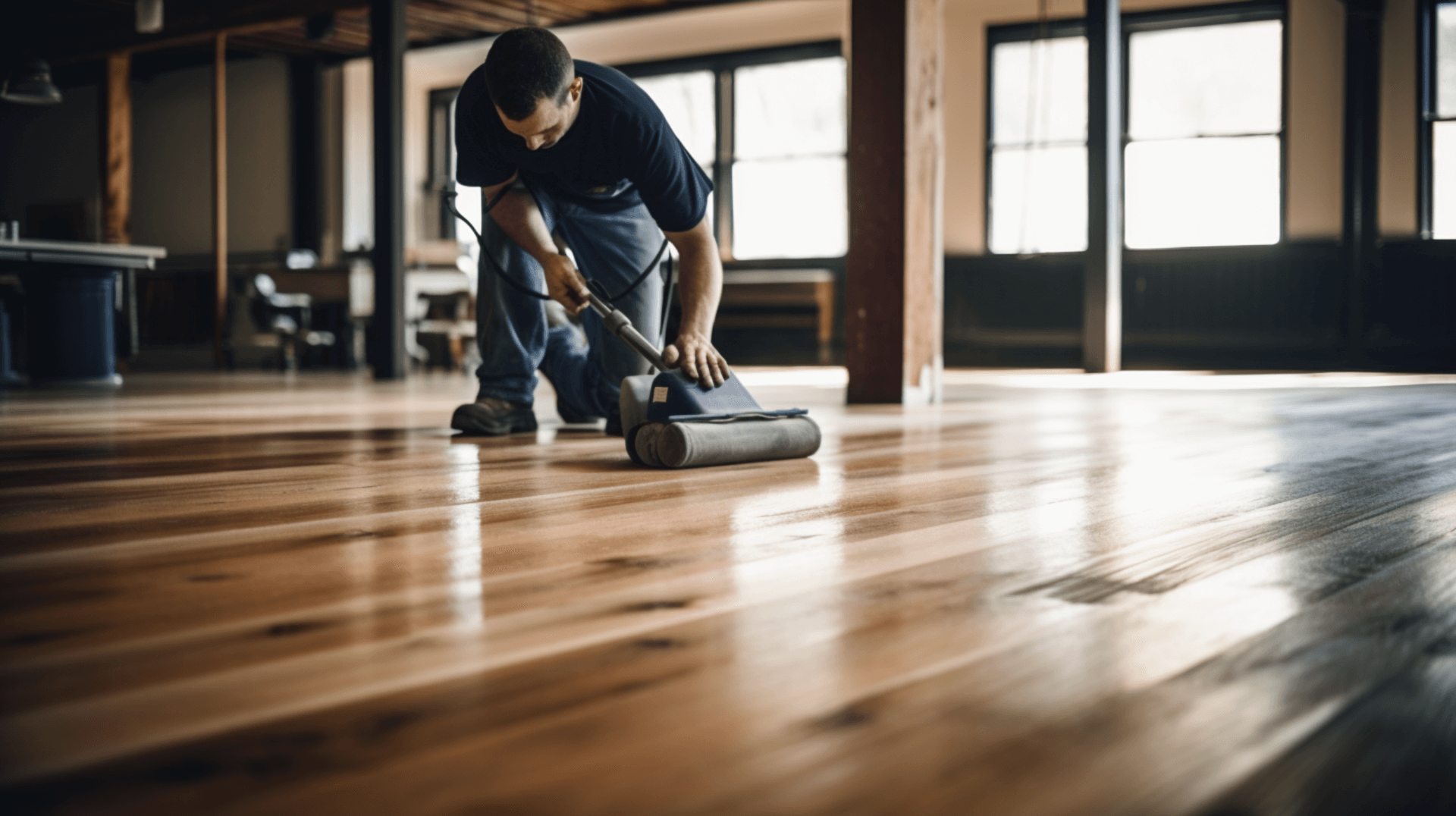
Identifying Your Wood Floor Type: The First Step to Even Sealant Application
There are several different types of wood floors, including solid wood, engineered wood, and laminate. Each type of wood floor has its own unique characteristics and requires different sealant application techniques.
Solid wood floors are made from a single piece of wood and are the most durable type of wood floor. They are typically installed over a subfloor and require more preparation before sealant application, such as the installation of a damp-proof course and vents in the opposing external walls to ensure adequate cross-ventilation. Solid wood floors should be sealed with a penetrating sealant.
Engineered wood floors are made from multiple layers of wood and are more stable than solid wood floors. They are usually installed as a floating floor and should be sealed with a surface sealant.
Laminate floors are made from a composite material and are designed to look like real wood. They are also installed as a floating floor and should be sealed with a surface sealant.
Knowing your wood floor type is important before applying sealant as it will help you determine the best sealant application process for your specific floor. It will also help you choose the right sealant for your wood floor type.
By identifying your wood floor type, you can ensure that the sealant is applied correctly and that the right sealant is used. This will help protect your wood floor, enhance its beauty, and ensure its longevity.
The Role of Subfloor Preparation in Ensuring Even Sealant Application

Proper subfloor preparation is essential for ensuring even sealant application on wood floors. The steps involved in preparing the subfloor for sealant application include cleaning the subfloor to remove any dirt, dust, or debris, filling any cracks or gaps, and sanding the subfloor to create a smooth and even surface. Tools and materials needed for this process include a vacuum cleaner, a broom, a dustpan, a putty knife, wood filler, sandpaper, and a sander.
In addition to these steps, it is important to use a covering material with a vapor permeance (perm rating) of no less than 1 perm (class III vapor retarder) to protect the wood floor from UV/sun exposure, which can cause color differences in the wood floor. Fabric-faced glides should also be placed under the legs of furniture to prevent scuffing and scratching, and area rugs should be used to protect the wood floor from wear and tear.
Proper subfloor preparation contributes to even sealant application by providing a smooth and level surface for the sealant to adhere to. This helps prevent the sealant from pooling in certain areas or being unevenly applied. Additionally, it helps ensure that the sealant adheres properly to the wood floor, enhancing its durability and longevity. By following these steps and using the right tools and materials, you can achieve a smooth and even surface for the sealant to adhere to, resulting in a beautiful and long-lasting finish for your wood floor.
Choosing the Right Sealant for Your Specific Wood Floor
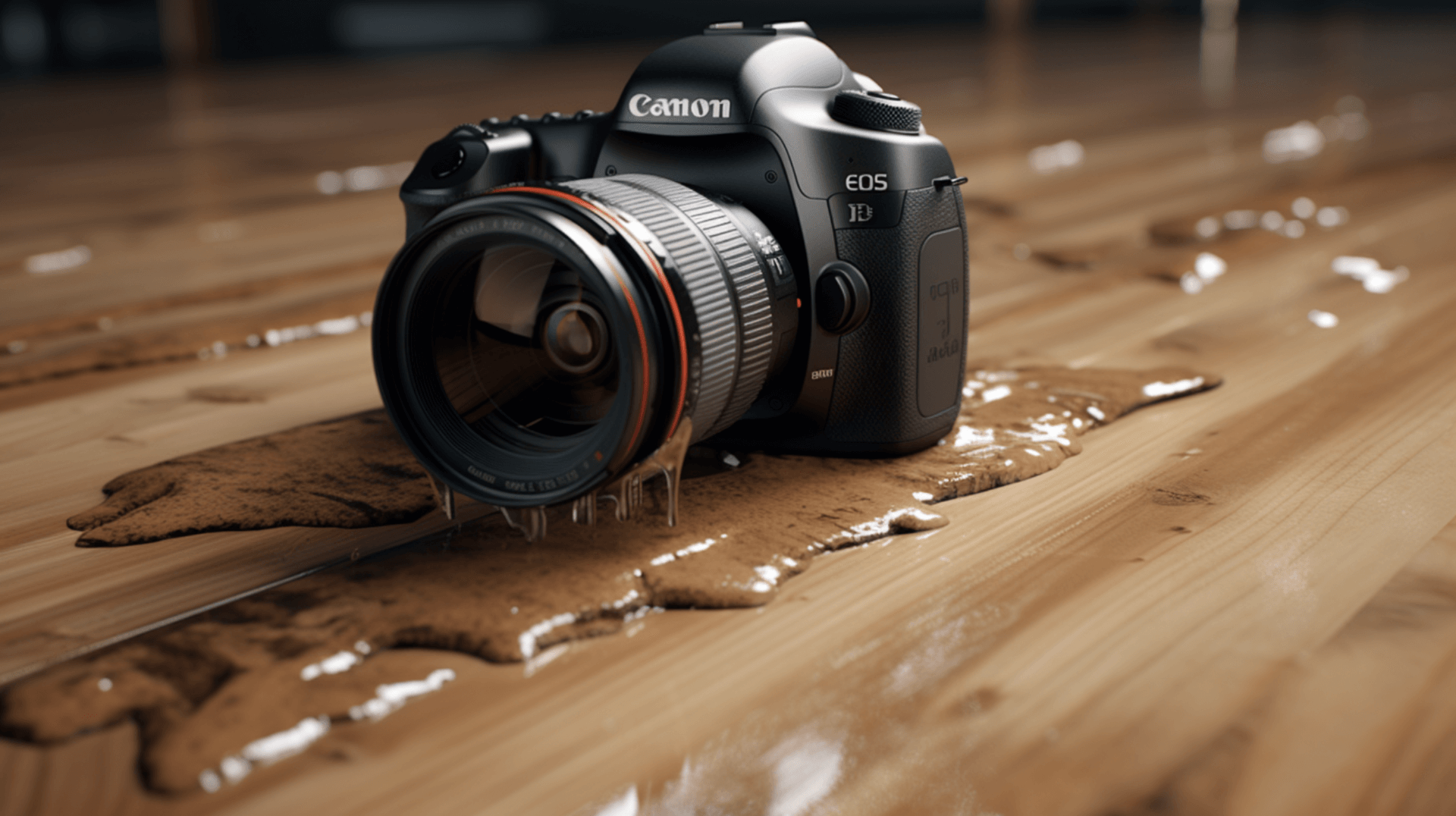
Choosing the Right Sealant for Your Specific Wood Floor
When selecting a sealant for your wood floor, it is important to consider the type of wood, the condition of the wood, and the desired finish. Different types of sealants interact differently with different types of wood, so it is crucial to choose the right sealant for your specific wood floor.
Waterbased sealants are the most common type of sealant used on wood floors. They are easy to apply, dry quickly, and provide a durable finish. They are also non-toxic and environmentally friendly. Waterbased sealants are best suited for engineered wood floors and laminate floors, as they are less likely to cause discoloration or damage to the wood.
Oilbased sealants are more durable and provide a richer, more natural finish than waterbased sealants. They are best suited for solid wood floors, as they are more resistant to wear and tear and provide better protection against moisture. oilbased sealants are more difficult to apply and take longer to dry, and they can cause discoloration or damage to certain types of wood.
When selecting a sealant for your wood floor, it is important to consider the type of wood, the condition of the wood, and the desired finish. Consulting with a professional or following the manufacturer’s recommendations can help ensure that you choose the right sealant for your specific wood floor. This will help protect your wood floor, enhance its natural beauty, and ensure its longevity.
Techniques for Applying the Sealant Evenly
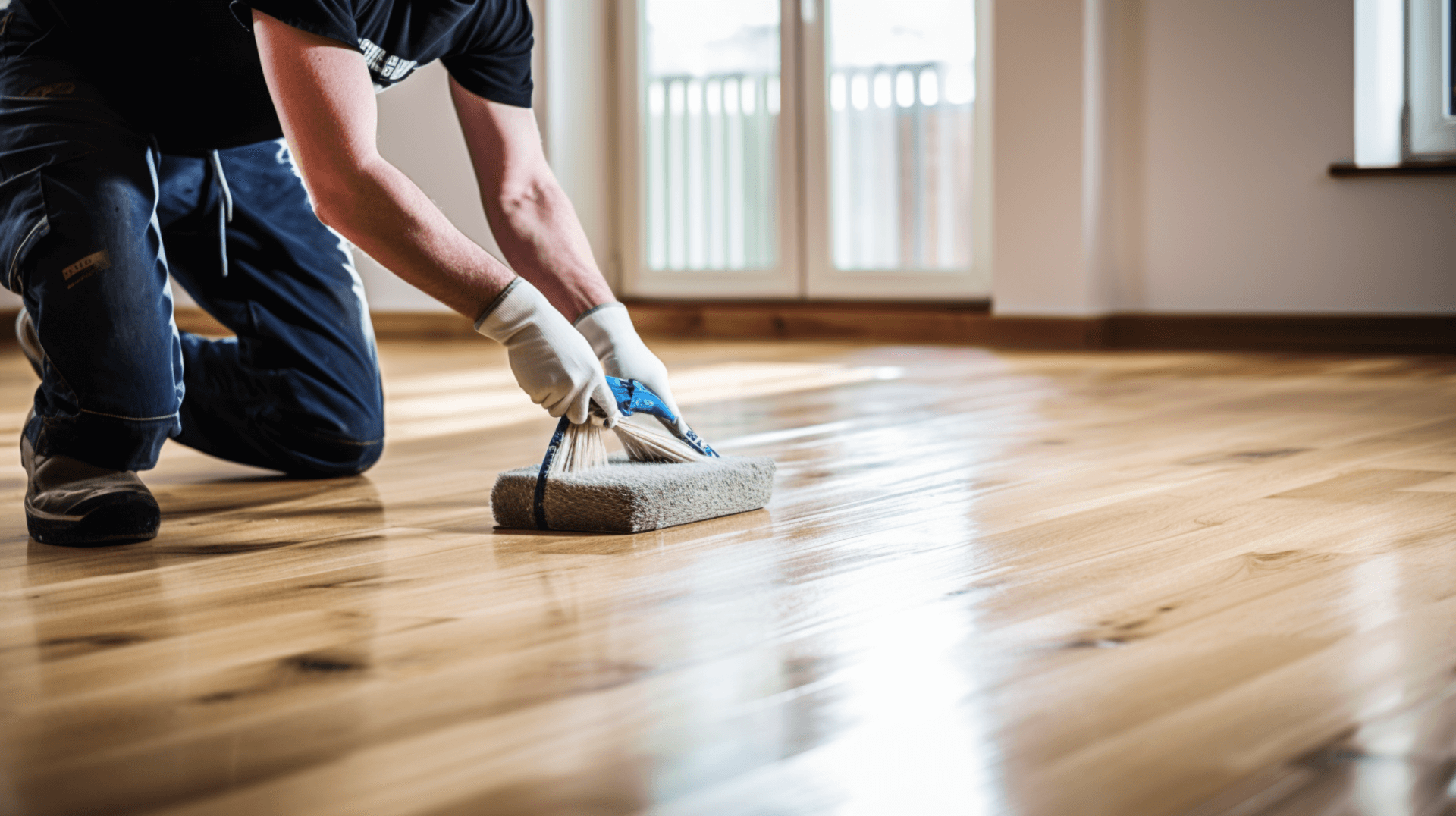
Applying sealant evenly is essential for achieving a beautiful and long-lasting finish on your wood floor. The best method for applying sealant is to use a paint roller or brush to apply thin, even coats. It is important to allow the sealant to dry completely before applying a second coat.
When applying the sealant, it is important to use the right amount. Too much sealant can cause pooling or an uneven finish, while too little sealant can leave the wood unprotected. Generally, two thin coats of sealant are recommended for most wood floors.
The tools needed for the application process include a paint roller or brush, a vacuum cleaner with a HEPA filter, a dustpan, a broom, a putty knife, wood filler, sandpaper, and a sander. It is important to use a vacuum with a HEPA filter or a dust extraction system to effectively capture and remove dust, ensuring a clean working environment. Additionally, any specific safety considerations as recommended by the manufacturer of the product or system utilized should also be followed.
To improve the thermal performance of a suspended timber floor, it is important to use materials that are appropriately certified for use as insulation under timber floors to achieve the required thermal transmittance (U-value). Checking the manufacturer’s technical information for certification and details is essential.
By following these techniques and using the right tools and materials, you can achieve an even and professional-looking coat of sealant on your wood floor. This will help protect and enhance the beauty of your wood floor, ensuring its longevity.
Avoiding Common Mistakes During Sealant Application
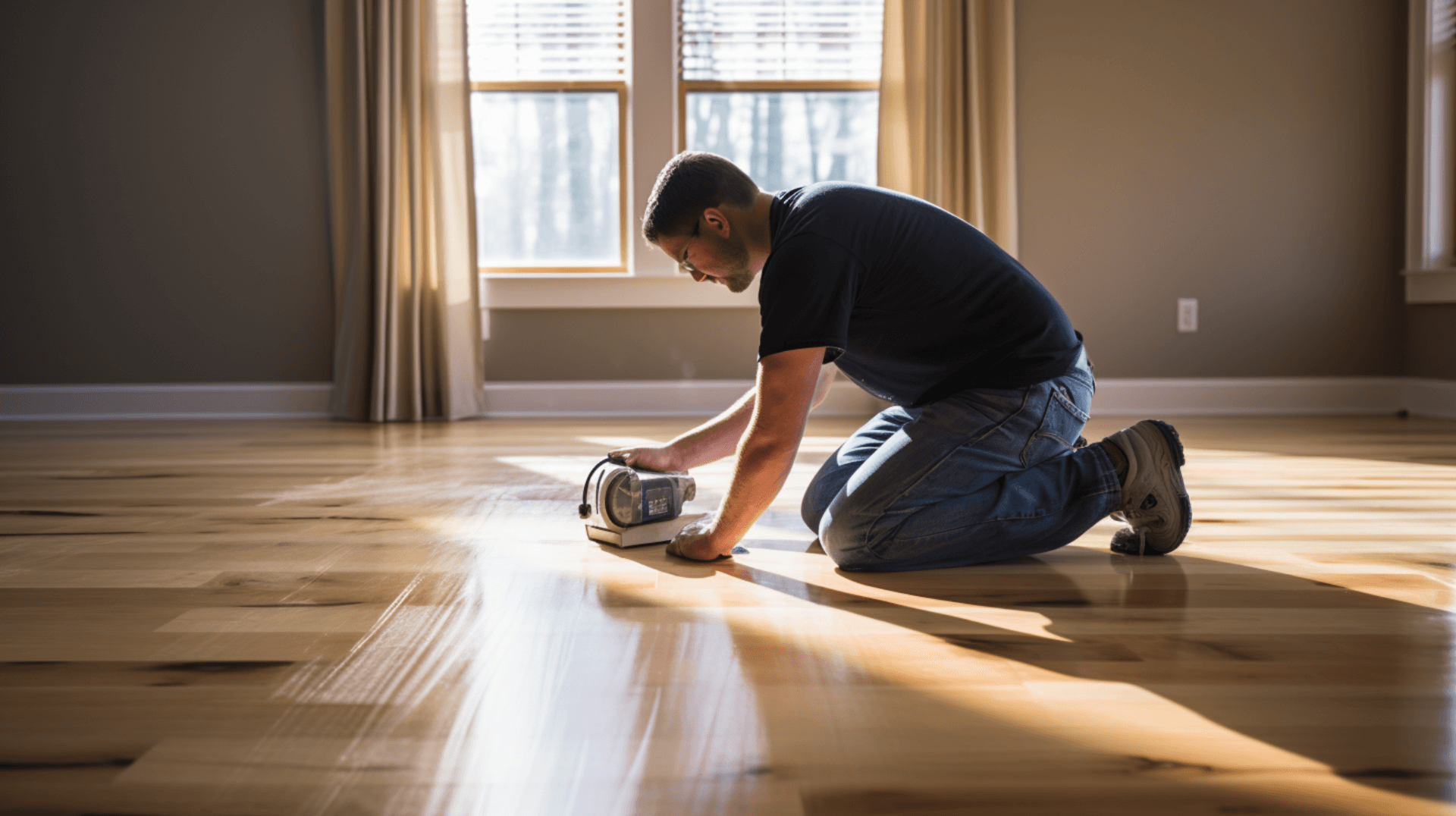
Applying sealant to a wood floor can be a tricky process, and it is easy to make mistakes that can lead to an uneven or patchy finish. Common mistakes made during sealant application include using too much or too little sealant, not allowing the sealant to dry completely before applying a second coat, and not using the right tools and materials.
To avoid these mistakes, it is important to use the right amount of sealant and to apply it in thin, even coats. This can help prevent pooling or an uneven finish. It is also crucial to allow the sealant to dry completely before applying a second coat. This ensures proper adhesion and prevents any issues with drying or curing.
Using the right tools and materials is also essential for achieving an even sealant application. A paint roller or brush is typically used to apply the sealant, and it is important to choose the appropriate tool for the type of sealant being used. Additionally, using a vacuum cleaner with a HEPA filter, a dustpan, a broom, a putty knife, wood filler, sandpaper, and a sander can help ensure a clean and smooth surface before applying the sealant.
If the sealant is not applied evenly, it is important to remove any excess sealant and allow the area to dry completely before reapplying the sealant. This can be done using a paint scraper or a chemical stripper. Taking your time and being patient during this process can help avoid damaging the wood floor.
By following these tips and techniques, you can avoid common mistakes and achieve a professional-looking finish for your wood floor.
Ensuring a Smooth Finish: The Curing Process
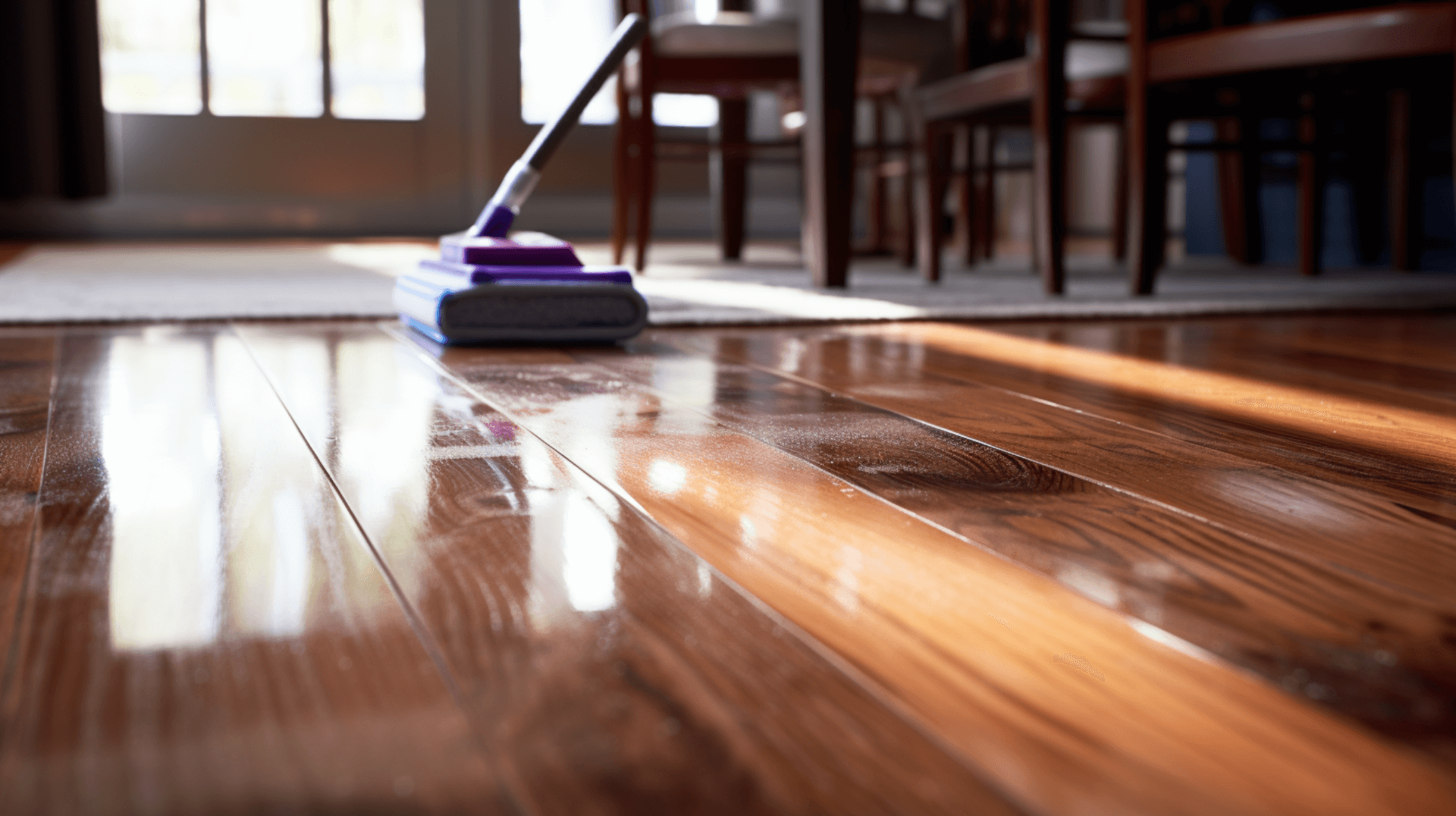
The curing process is an important step in achieving a smooth and even finish on your wood floor. The curing process is the time it takes for the sealant to dry and harden, and it is essential for ensuring a durable and long-lasting finish.
The amount of time it takes for the sealant to cure depends on the type of sealant being used, the temperature and humidity of the room, and the thickness of the sealant. Generally, water-based sealants take between 8-12 hours to cure, while oil-based sealants take between 24-48 hours.
To ensure a smooth finish, it is important to take steps to protect the sealant during the curing process. This includes avoiding walking on the sealant, keeping the room temperature and humidity consistent, and avoiding any contact with water or other liquids. Additionally, it is important to keep the room well-ventilated to allow the sealant to dry properly. To reduce draughts, it is also important to seal the gaps between the floorboards and along the skirting, or alternatively fix hardboard or chipboard over the top of them.
To protect the sealant from damage during the curing process, it is important to use fabric-faced glides under the legs of furniture to prevent scuffing and scratching. It is also recommended to avoid placing heavy objects on the floor until the sealant has fully cured. Additionally, it is important to leave room for expansion around the edges of each room and to seal any gaps between the floorboards and along the skirting.
By following these steps, you can ensure a smooth and even finish on your wood floor and protect the sealant from damage during the curing process. This will help to prolong the life of your wood floor and maintain its beauty for years to come.
PostApplication Care: Protecting Your Sealed Wood Floor
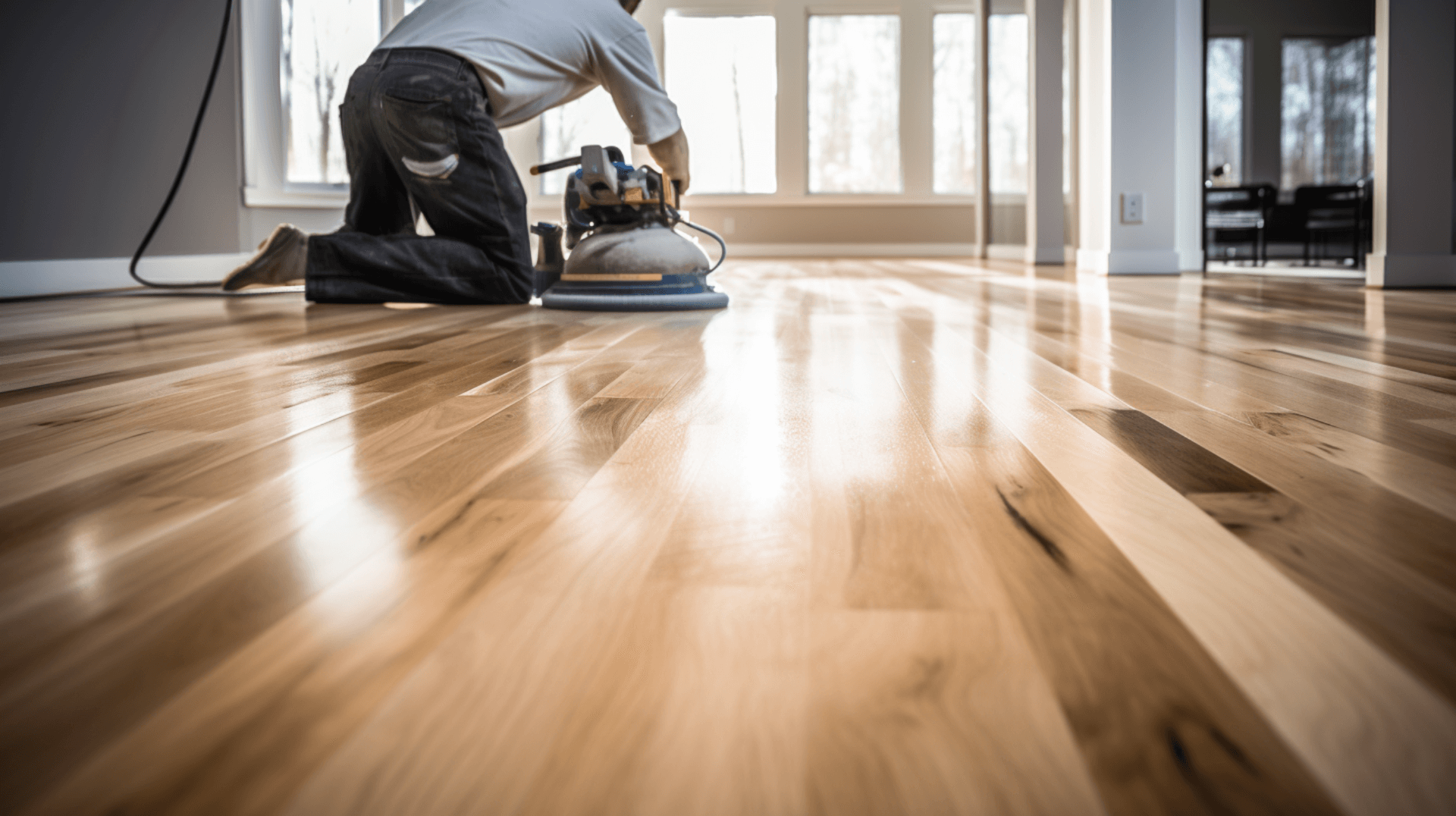
To maintain your sealed wood floor after sealant application, it is important to follow a regular cleaning routine. This includes sweeping or vacuuming the floor regularly to remove dirt, dust, and debris. A vacuum cleaner with a HEPA filter or a dust extraction system should be used to effectively capture and remove dust. A damp mop can also be used to clean the floor, but it is important to avoid using too much water, as this can damage the sealant. It is also important to avoid using harsh cleaning products, such as ammonia or bleach, as these can damage the sealant and the wood. Instead, use a wood floor cleaner specifically designed for sealed wood floors.
To protect your sealed wood floor from wear and tear, it is important to use fabric-faced glides under the legs of furniture to prevent scuffing and scratching. Area rugs should also be used in high-traffic areas to protect the floor from wear and tear.
Maintaining a consistent environment throughout the year is also important to minimize floor movement. Using a humidifier during the winter or dry months and/or a dehumidifier during humid months can help regulate the moisture levels in the room and prevent the wood from expanding or contracting excessively.
By following these maintenance steps, you can keep your sealed wood floor looking its best and ensure its longevity.
Troubleshooting Sealant Issues: What to Do When Things Go Wrong
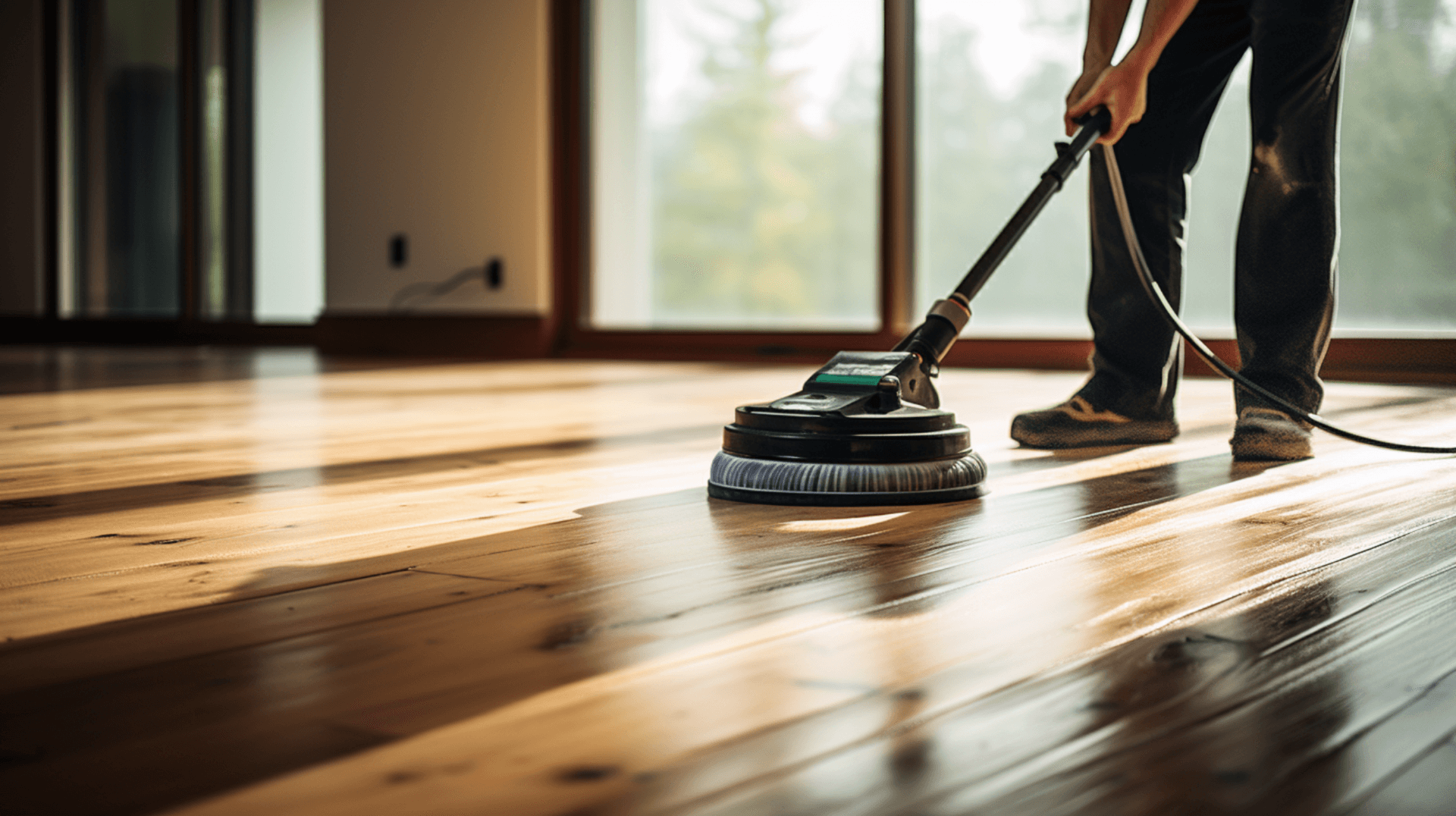
Troubleshooting Sealant Issues: What to Do When Things Go Wrong
The most common issues with sealant application on wood floors are pooling, an uneven finish, and discoloration or damage to the wood. Pooling occurs when too much sealant is applied, resulting in an uneven finish. An uneven finish can also occur when the sealant is not applied in thin, even coats. Discoloration or damage to the wood can occur when the wrong type of sealant is used or when the sealant is not allowed to dry completely before applying a second coat.
To resolve these issues, it is important to remove any excess sealant and allow the area to dry completely before reapplying the sealant. This can be done using a paint scraper or a chemical stripper. Taking your time and being patient during this process can help avoid damaging the wood floor. It is also important to leave room for expansion around the edges of each room and to seal any gaps between the floorboards and along the skirting.
If the sealant issues are more severe or persistent, it is recommended to consult a professional. A professional can assess the situation and provide advice on the best course of action. They can also help identify any underlying issues that may be causing the sealant issues and provide solutions to prevent them from occurring in the future.
The Role of Professional Services in Sealant Application
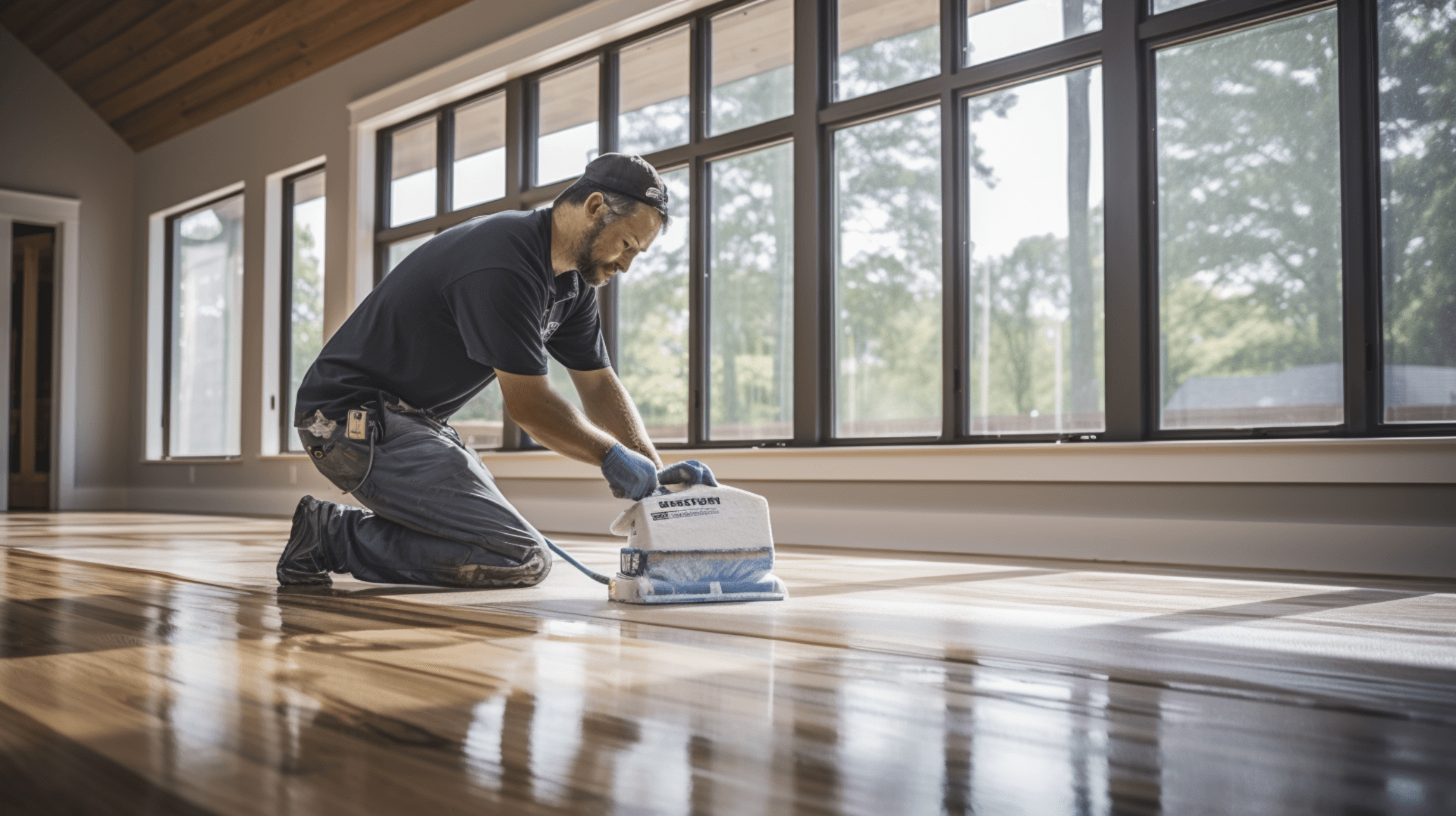
Hiring a professional for sealant application, such as GJP Floor Sanding, offers several benefits for home and business owners. Our experienced professionals have the knowledge and expertise to ensure even sealant application, resulting in a smooth and professional finish. We use the latest tools and techniques, including a dust extraction system, to create a clean working environment and achieve optimal results.
GJP Floor Sanding takes steps to protect the sealant during the curing process, such as avoiding walking on the sealant, maintaining consistent room temperature and humidity, and preventing contact with water or other liquids. We also use fabric-faced glides under furniture legs to prevent scuffing and scratching, ensuring the floor remains in pristine condition.
In addition to sealant application, GJP Floor Sanding offers a comprehensive range of services, including floor sanding, restoration, repairs, power scrubbing, and staining. We provide expert advice and guidance on the best products and techniques for each project, ensuring the longevity and beauty of the wood floor.
By hiring a professional service like GJP Floor Sanding, home and business owners can have peace of mind knowing that our sealant application will be done correctly and efficiently. This not only enhances the appearance of the wood floor but also protects it from damage and extends its lifespan.
Expert Advice: Tips from GJP Floor Sanding Professionals
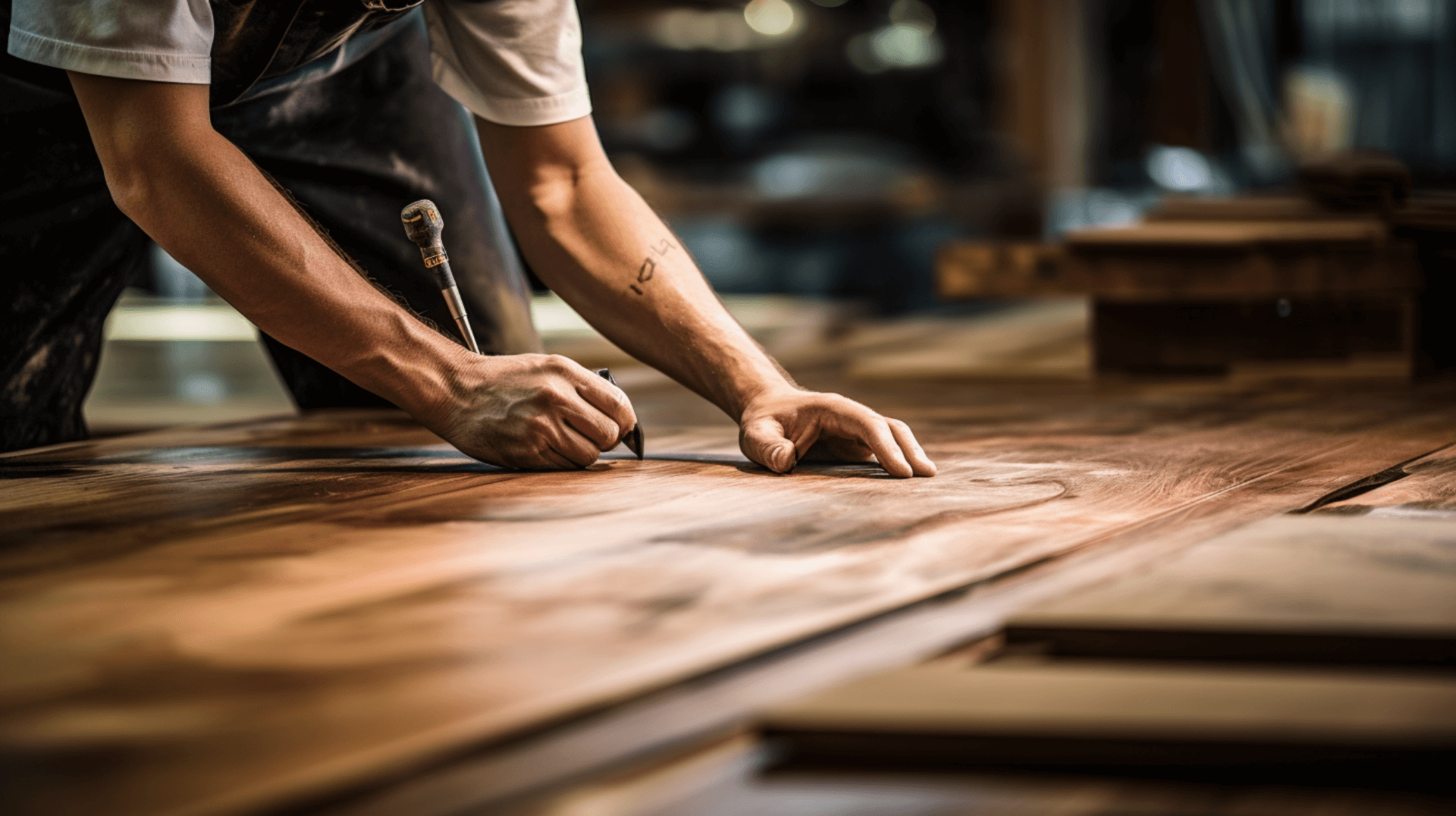
Expert Advice: Tips from GJP Floor Sanding Professionals
To ensure even sealant application on wood floors, GJP Floor Sanding professionals have several tips:
- Use the right amount of sealant and apply it in thin, even coats. This can help prevent pooling or an uneven finish. Allow the sealant to dry completely before applying a second coat for proper adhesion and to prevent issues with drying or curing.
- Choose the appropriate tools and materials for the job. A paint roller or brush is typically used to apply the sealant, and it’s important to select the right tool for the type of sealant being used. Additionally, using a vacuum cleaner with a HEPA filter, a dustpan, a broom, a putty knife, wood filler, sandpaper, and a sander can help ensure a clean and smooth surface before applying the sealant. For additional airtightness, consider laying a vapour permeable membrane with sealed joints below the flooring.
To maintain a sealed wood floor, follow these best practices:
- Regularly sweep or vacuum the floor to remove dirt, dust, and debris. Use a vacuum cleaner with a HEPA filter or a dust extraction system to effectively capture and remove dust. A damp mop can also be used to clean the floor, but it’s important to avoid using too much water, as this can damage the sealant. For additional airtightness, consider laying a vapour permeable membrane with sealed joints below the flooring.
- Use fabric-faced glides under furniture legs to prevent scuffing and scratching. Place area rugs in high-traffic areas to protect the floor from wear and tear.
GJP Floor Sanding can help with all your wood floor needs. We offer professional sealant application, floor sanding, restoration, repairs, power scrubbing, and staining services. Our experienced professionals use the latest tools and techniques to ensure a smooth and professional finish. We provide expert advice and guidance on the best products and techniques for each project, ensuring the longevity and beauty of your wood floor. By hiring GJP Floor Sanding, you can have peace of mind knowing that your wood floor will be in expert hands.
Contact Us: Get Professional Help from GJP Floor Sanding
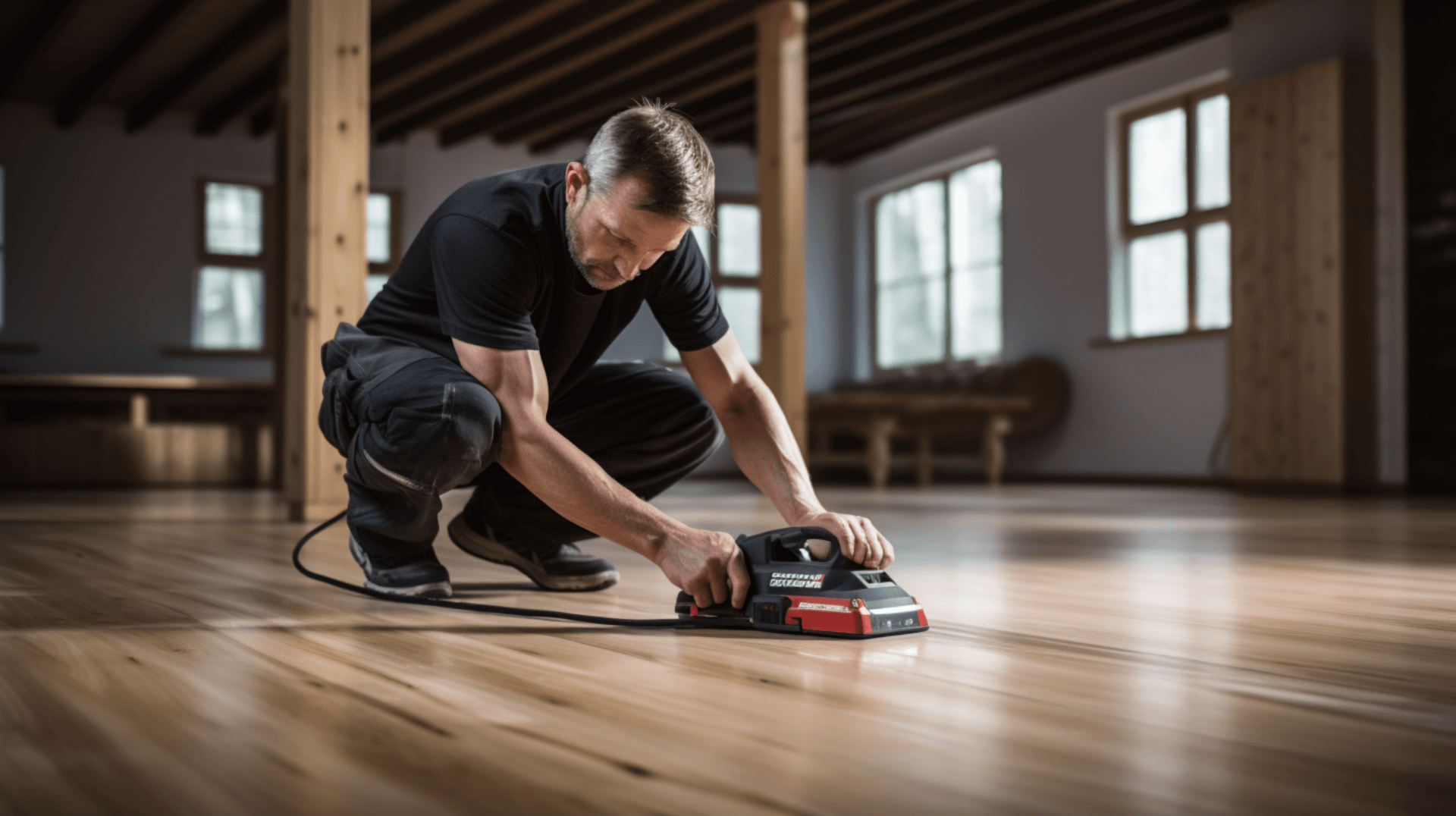
To get in touch with GJP Floor Sanding for professional help with your wood floor needs, you can contact us via our website or call us directly. When contacting GJP Floor Sanding, it is important to provide information about the type of wood floor you have, the size of the area, and the type of service you require. This will help us provide you with an accurate quote and the best advice for your project.
GJP Floor Sanding is the perfect choice for all your wood floor needs. Our experienced professionals have the knowledge and expertise to ensure even sealant application, resulting in a smooth and professional finish. We use the latest tools and techniques, including a dust extraction system, to create a clean working environment and achieve optimal results.
GJP Floor Sanding takes steps to protect the sealant during the curing process, such as avoiding walking on the sealant, maintaining consistent room temperature and humidity, and preventing contact with water or other liquids. We also use fabric-faced glides under furniture legs to prevent scuffing and scratching, ensuring the floor remains in pristine condition. Additionally, we ensure that the product is not applied over electrical cables, recessed lighting, existing vents or ventilation gaps, and that adequate fire resistance and fire stopping is provided by floors.
In addition to sealant application, GJP Floor Sanding offers a comprehensive range of services, including floor sanding, restoration, repairs, power scrubbing, and staining. Our professionals provide expert advice and guidance on the best products and techniques for each project, ensuring the longevity and beauty of your wood floor.
Contact GJP Floor Sanding today for professional help and transform your wood floor into a stunning and durable surface.
